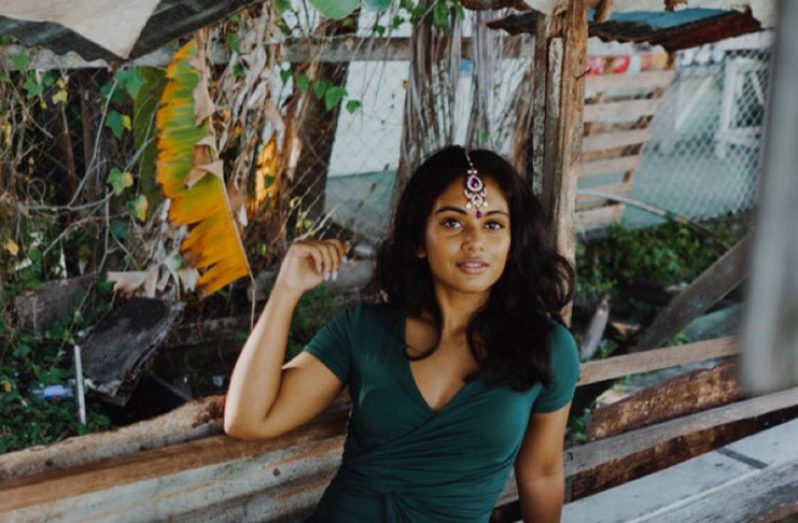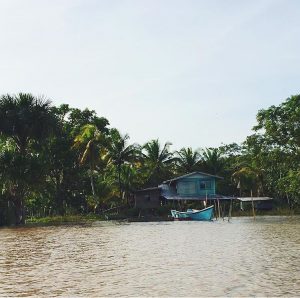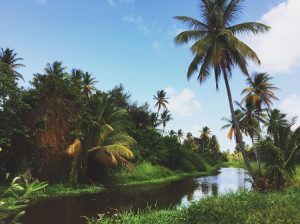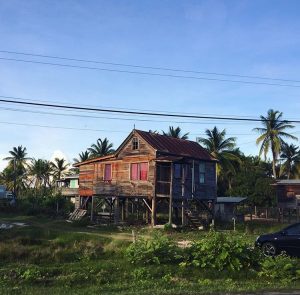By Gibron Rahim
THERE is an art to photography. One of the impressions of the art form that tends to emerge is that it always requires the most advanced equipment and extensive technical skills. While true in quite a few instances, this is not always necessarily the case. As Stephanie Persaud has discovered, sometimes all that is required to take an unforgettable photograph is a good eye and a smartphone with a high-quality camera.
Speaking to the Pepperpot Magazine, Stephanie revealed that she has no technical photography training. She has a background in marketing and a love for capturing images that tell a story. It was combining that love of narration through images with the easy availability of her iPhone that led her to photography. “It kind of happened organically,” she explained. “I would see the world in a frame of a photo.” The resulting images that she first captured came out looking great. She related that many of her friends who were photography majors would comment on how well those photos were framed.
Stephanie recalled studying fashion magazines when she was younger. This is one of the reasons she cited for her talent at taking photographs. As she became interested in marketing at a young age, she would spend quite a bit of time looking at the ads and photoshoot spreads in those publications. “I feel [that] me looking at all of those things subconsciously trained me to understand how to take a photo,” she said. Stephanie noted that many of us have a tendency to look at professionals and think that we need elaborate equipment or a degree to achieve the same success. “But no amount of schooling can teach you talent; if you’re talented, you’re talented,” she emphasised. “A degree doesn’t define talent, it just shows that you have technical skills.” And those technical skills, she said, can be learned using the many resources we have available to us today.
One of the advantages of smartphone photography is accessibility, in that, almost everyone has a phone with a camera. Stephanie related too that her phone, an iPhone 6, is not that new. The model of a phone, then, does not need to be the most important determining factor in taking quality photographs. “It’s about understanding the lighting and knowing what you’re trying to capture and how you’re trying to capture it,” she said. “Proper editing also makes a huge difference.” It makes all the difference once someone gets out of their own head and stops trying to define themselves as something. “I don’t call myself a photographer, I take photos,” Stephanie said in that regard, “Once you stop trying to define yourself as one thing it allows you to be fluid and be more than one thing.” Humans are not one-dimensional beings she said.
GUYANA THROUGH PHOTOGRAPHY
Besides her love for the art, photography has also given Stephanie the opportunity to capture Guyana in photographs. Born to Guyanese immigrant parents and raised in New York, she has been living here for the past several years. She explained that photographs allow her to capture moments in the present that will become a part of Guyana’s history in the future. “It’s being able to capture an emotion or a feeling within a photo and tell a story without having to say a word,” she said.
NEW YORK BEGINNINGS
Stephanie recalled that she began taking photographs around 2011 in New York when she got her first iPhone. The photographs she took in New York were of people but also largely involved landscapes, street photography, architecture and food along with moments happening around her. She noted that the difference between taking photographs in New York and in Guyana is that beauty here is not as glaringly obvious as New York since it’s a more developed city with more subject matter to see and shoot. She explained that the beauty we possess in Guyana is subtler since, she said, it is sometimes the juxtaposition of the old and ugly next to something as small and naturally beautiful as a flower, the way a house curves or the way the light or the sky reflects off the water by the seawall. “It’s little things that people have been so accustomed to seeing that if you’re not looking for beauty as you’re living life you’ll miss it.”
Finding that hidden beauty is crucial to Stephanie’s photo capture and indeed to the work of anyone involved in any form of art. “An artist is someone who is able to find the beauty in things that people don’t necessarily consider beautiful,” she observed. She went on to point out that it is important to not overthink when taking photographs since it requires being fluid with one’s movements. “If you try too hard it never works,” she said. There are also some images, such as some mountains and landscapes, which Stephanie does not even attempt to capture as they are so beautiful and vast that a photograph could not do them justice.
THE UPS AND DOWNS
The use of an iPhone in photography has both benefits and drawbacks. Stephanie strongly feels that there are more benefits to using the iPhone to capture photos. Among these are the portability and accessibility of the device. “It’s easier to edit because you can edit on your phone within your spare time,” she added. One of the greatest benefits though is not missing out on photographic opportunities as they arise. “It allows you to capture the moment instead of you lugging around heavy equipment looking for it,” explained Stephanie. She elaborated that the experience of taking the photographs is not as organic and the equipment can be more of a hindrance. She did concede though that the photo quality and editing options are greater with the more traditional route. Smartphone photography also has to contend with space and battery limitations but Stephanie noted that those drawbacks can be dealt with.
Drawbacks notwithstanding, using her iPhone remains Stephanie’s preferred way to take photographs. Many of her photos, which are available for purchase, have been shot from moving vehicles, including boats. “Sometimes when I look back at them I’m actually in awe that I took that with an iPhone in a moving car,” she related. “I think it’s more so being able to see the photo and line the shot up in such a way that, not only is it a high-quality image, but it captures it in a unique way.” A photo that she really loves is one she took of two children at the Parika Stelling. The girl in the image is wearing a bright yellow dress and sits next to her younger brother while they are both surrounded by bunches of bananas. “The contrast of her yellow dress with the green bananas and just the angle in which it was shot is so perfectly symmetrical that it makes me so happy to see,” Stephanie reflected. “For me, that photo represents Guyana.”
Stephanie’s advice to anyone who is considering taking up smartphone photography is to just start. “Don’t think about it, just do it,” she said. If someone can afford classes and would like to learn the technical skills needed traditionally, she said they should, by all means, do so. “Just start shooting because if you’ve already paid for your phone there’s nothing to lose,” she pointed out. She noted the importance of practice, continuing to take photos in different angles, lighting and settings while at the same time reviewing to understand and analyse which captures work and which ones do not.
The next showing of Stephanie Persaud’s photos will be this upcoming May at the Roraima Duke Lodge’s gallery. Anyone looking to find out more information about Stephanie’s work or her future showings can contact her at stephaniie.persaud@gmail.com.



.jpg)











